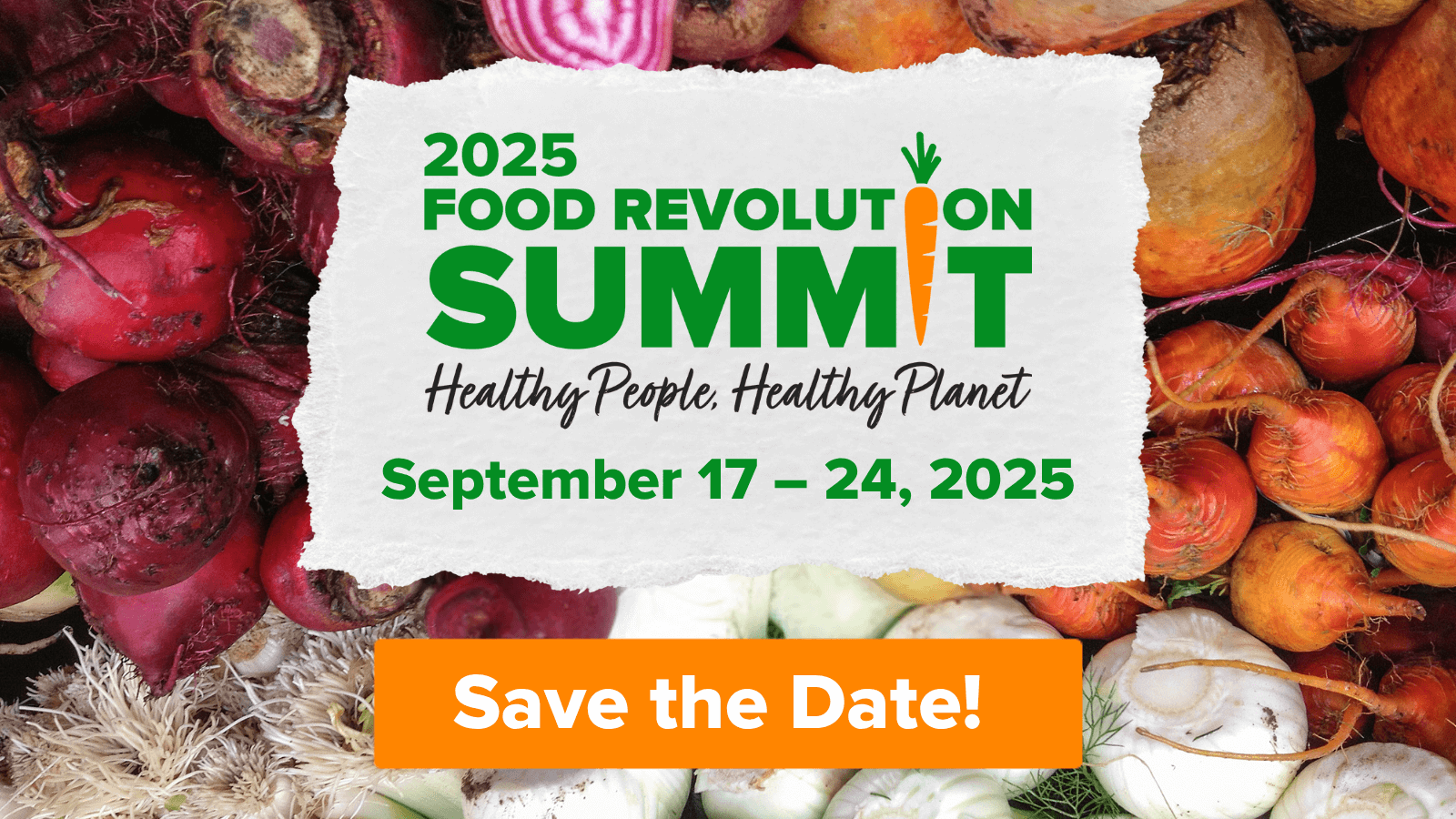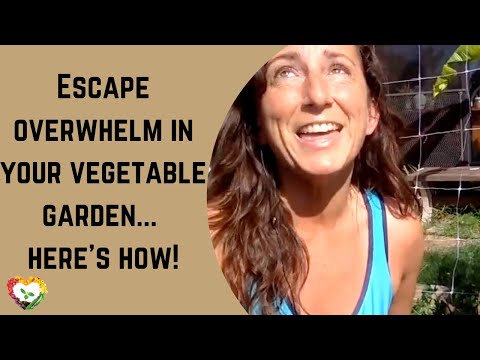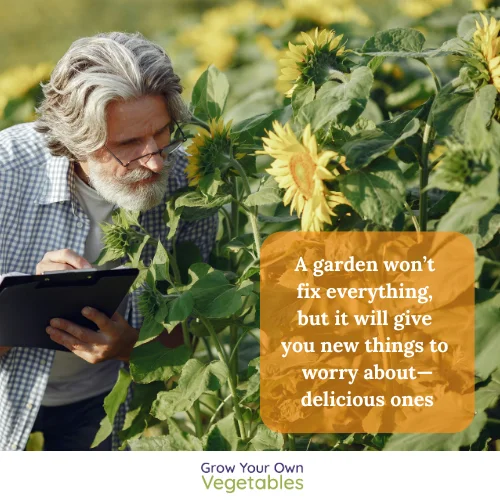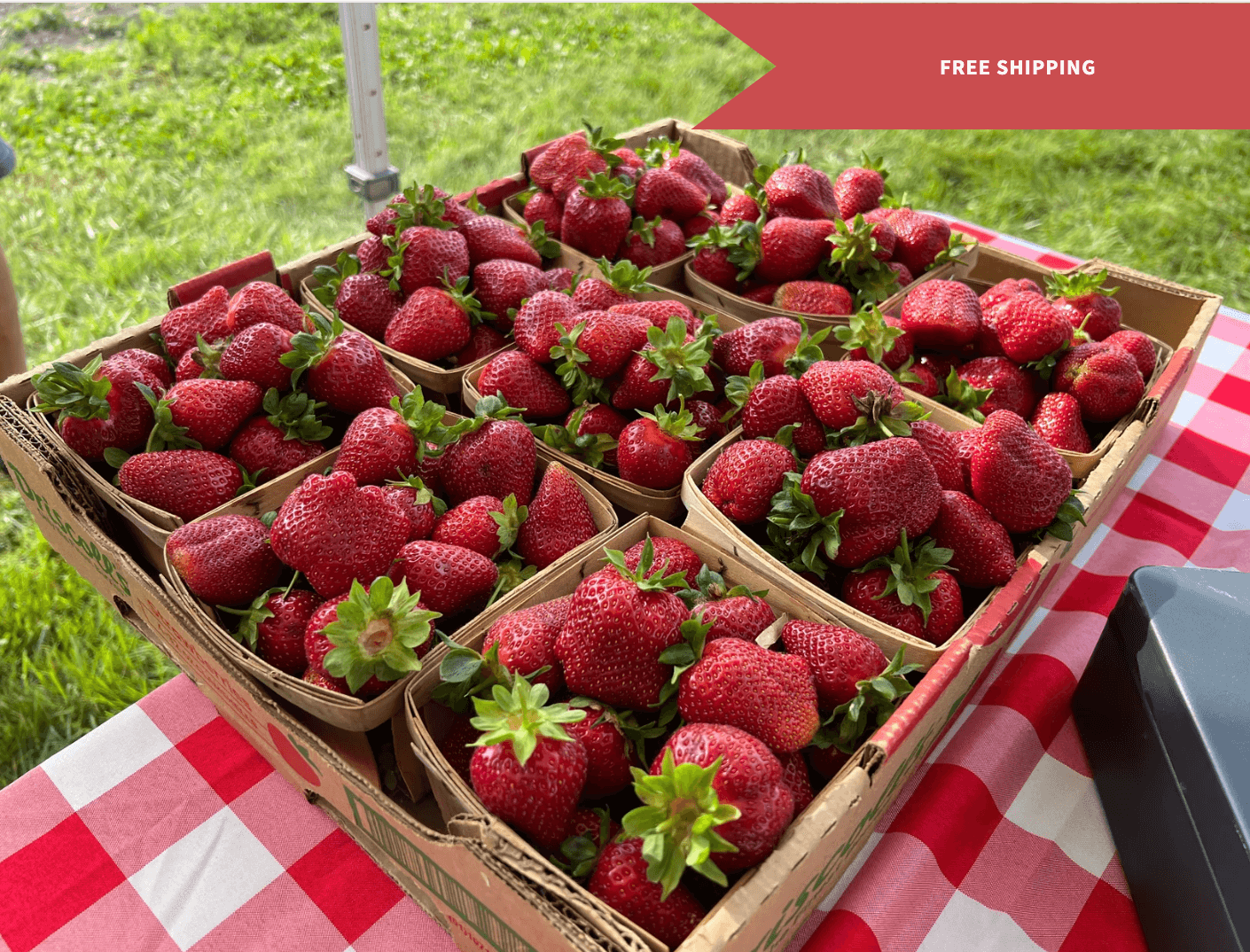Home Gardener’s
Weekly
Issue
No. 141
September
12, 2025
Just in time for fall harvest season, this popular event is returning—and you’re invited! For three inspiring days, you’ll learn how to stretch your harvest, save money, and turn garden-fresh ingredients into simple, delicious meals. This year’s series is hosted by Stacey Murphy (founder of Grow Your Own Vegetables) and Denise Beins (CEO of GYOV), who share a passion for helping you savor every bite of your harvest.
Here’s what you’ll gain when you join us:
💲 Save money by reducing grocery bills with fresh fruits, vegetables, and herbs.
🌿 Enhance your nutrition so every meal fuels energy and well-being.
🍅 Boost flavor with easy, mouthwatering recipes made from your harvest.
You’ll also get hands-on inspiration from guest experts, including:
• Crispy Air Fryer Zucchini Fries + Vegan Chipotle Ranch with Kim Murphy
• Black Bean Burgers in under 30 minutes with Nichole Dandrea-Russert, RDN
• Herbal Vinegars for your healing pantry with Kami McBride
• Quick Pickles bursting with flavor with Stacey Murphy
…and more, from fresh-baked bread to rose hip jam!
Thousands of gardeners and food lovers joined us last year. The Enjoy Your Harvest Workshop Series happens September 17–19 only, and it’s completely free to attend.
“I would very much recommend this event to my friends who garden and want to eat healthy! Great ideas here!” — Marie H.
Imagine if doctors prescribed vegetables…
That’s the vision behind the 2025 Food Revolution Summit Docuseries: Healthy People, Healthy Planet. This free, eight-part event brings together 45 of the world’s top doctors, scientists, and food experts — all sharing how you can use food to prevent disease, boost energy, and even support the health of our planet.
As gardeners, we know the joy of harvesting fresh food from our own backyards. But this docuseries takes it a step further — showing how what we grow and eat can transform our lives. From September 17–24, you’ll hear the latest breakthroughs from leading experts like Dean Ornish, Michael Greger, and Ayesha Sherzai.

Weekly Garden Tip
For healthier indeterminate tomatoes, prune all the leaves off up to the first set of fruit. Then, once you harvest that fruit, prune the leaves just above them off as well.
Less leaves mean less disease potential and more air circulation.

Free Resource
Invite Beneficials Guide
Unlock the secret superpower hidden in your garden—beneficial insects! Discover how simple tweaks can turn your garden into a buzzing, flourishing ecosystem. From choosing plant pairs that lure helpful pollinators to creating safe havens where these garden champions can live and thrive, this guide makes natural pest protection both practical and inspiring.
Here’s what you’ll learn:
• Smart planting strategies that attract predators and pollinators.
• How to create welcoming habitats and maintain shelter through season changes.
• Say no to pesticides—and yes to a healthier garden balance.
Dive in and transform your garden into a haven for nature’s best helpers. 🐞

Feeling overwhelmed by your to-do list in the garden? This short, energizing video is just what you need—it delivers a warm, reassuring boost and smart strategies to help you regain calm, get back on track, and transform gardening stress into joyful progress. Whether it’s tackling unruly weeds or sorting out harvest logistics, this clip guides you through small changes that can make a big difference.
If your garden has felt more like a chore than a haven, take a few minutes to press play and receive the gentle motivation you need to reclaim ease and enjoyment in your gardening routine.
🍅 BLOG 🍅
5 Methods to Preserve Vegetables at Home
🥕 Ready to make the most of your garden’s bounty before it fades? Our blog post, “5 Methods to Preserve Vegetables at Home,” is your roadmap to putting every harvest—and every veggie—to delicious, lasting use. Whether you lean toward drying, freezing, fermenting, or safe canning techniques, this guide offers straightforward tips to match your kitchen style, tools, and goals.
Take control of your harvest—minimize waste, save money, and extend the garden’s flavor long into the off-season. Don’t let good produce go to waste—discover your preservation approach now.
Ensure your garden’s bounty lasts all year long with these simple techniques! 🌱
🍓 Preorder Now: Fall Strawberry Plugs 🍓
Imagine uncovering your garden in the spring to find strong, well-established strawberry plants already waiting to burst into bloom. That’s the magic of planting strawberry plugs in the fall! Simply tuck them into your beds now, cover them with straw or row covers for winter protection, and by spring you’ll have thriving plants ready to produce a full harvest in their very first year.
We’re excited to partner with our friend Michael Kilpatrick at Farm on Central to bring you these organically nurtured plugs. Each order is shipped at the perfect planting time for your region—so you get plants that are primed for success. Start your journey to baskets of sweet, homegrown strawberries next spring with the easiest (and tastiest) fall planting project you’ll ever do.
What: Enjoy Your Harvest Workshop Series
Who: Grow Your Own Vegetables
When: September 17-19, 2025
Enjoy Your Harvest is a brand new event here at Grow Your Own Vegetables featuring visionary fresh foodies coming together to support growers and fresh food enthusiasts alike.
During this event, you’ll discover how to:
• Support Gut Health: A healthy digestive system plus improved gut microbiome
• Enhance Flavor: Vibrant, natural flavors that elevate your dishes
• Boost Nutrient Intake: Fresh, nutrient-rich produce at its peak
• Improve Health: Increased vitamins, minerals, and antioxidants
• Promote Sustainability: Reliance on commercial agriculture reduced
• Foster Creativity: Culinary creativity with a variety of fresh and preserved ingredients
• Provide Year-Round Access: The taste of summer even in winter
• Encourage Healthy Eating: More accessible and appealing nutritious meals
Join us to be inspired with new ways to enjoy meals prepared with fresh produce! Enjoy Your Harvest is here to support our global community on their journey to a healthy, fresh food lifestyle.

WHAT’S HAPPENING IN HARVEST CLUB
This week’s Garden Jam was led by GYOV Founder Stacey Murphy, who kicked things off with a special Abundance Training: 5 Tips for Peak Season Overwhelm. Members also dug into practical fall topics, including:
🌱 Resources for planning your fall & winter garden
🌿 Which soil amendment ingredients make the biggest difference
🥦 Can you still grow broccoli & cabbage this season with a greenhouse?
“I CANNOT Thank You ENOUGH Stacey! for your GREAT advice!! I’m SO glad you’re back!!” — Harvest Club member
Harvest Club members—join us again this Monday, Sept. 15 at 3pm. Watch your inbox for invite details.
To view the replay, log into your portal and click here.
Harvest Club is where community and fresh food goals grow together—join the conversation, get your questions answered, and keep thriving! 🍅🥕🌽🫐🍆🌱
Not a member of our garden membership Harvest Club? You can get a one-time complimentary two-month membership with any of our courses. Harvest Club has tons of resources to help you thrive. Plus, you get access to ongoing garden support through email. Learn more here.

Dear Arti:
Question: Do you have any free templates or suggestions on how to label and store seeds? I have plenty of nasturtium, poppy, herbs, etc. seeds I’ve been storing in vitamin plastic bottles or envelopes and am not sure if this is the right way to store them. – Marieta O., CA
Answer: Hi Marieta,
The best way for gardeners to store most seed varieties is in an airtight container in the fridge. I like mason glass jars because you can get them in virtually any size you need and they create a great airtight seal to keep moisture out.
In terms of labeling, if you want the whole label, just stick the seed packet in with the jar. You can do this individually if you have larger seeds or larger quantities, or, if you’ve just got 10-20 packets, you can get a half gallon mason jar, stick ’em all in with the seeds still in the packets, seal it up, and put it in the fridge until next year.
For labels from seeds you’ve saved, I recommend keeping the original seed label of the parent plant if you have it, then labeling with the year and the variety at a bare minimum. If you really want to have references, you can also create a larger label or keep a record of each plant you gather seed from and make notes to how long the seed was left on the plant before you gathered, where in the garden it was planted, along with significant sunlight, nutrient, pest, disease, and precipitation notes. That way, if your seeds do really well, you’ll be able to reference it to see why that might be. Perhaps the parent plant got more sunlight than previous years, or maybe you harvested too early and didn’t get the germination rate you expected. So, those are some of the things you might consider in regards to labels when seed saving. I hope that helps!


This little red pepper may be on the small side, but it’s packing plenty of flavor! 🌶️
We loved adding it to a hearty fall harvest dish featuring local shiitake mushrooms, onions, garlic, and more—including a big, beautiful red pepper straight from the GYOV Garden.
Even better, this delicious meal was enjoyed at the picnic table right in the garden, making it a truly special birthday celebration surrounded by fresh produce and nature’s beauty.
Photo by heatherzalabak.com


Connect with us:
This page may contain affiliate links. If you click and take action, Grow Your Own Vegetables LLC may be compensated. We only recommend events and products that we love and that we know can be helpful to you as a gardener.







